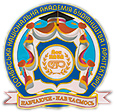NASA's Latest Brain Research at ISS Prepares for Upcoming Cargo Mission

On July 3, 2025, NASA Flight Engineer Nichole Ayers participated in a groundbreaking human research experiment aboard the International Space Station (ISS) known as Drain Brain 2.0. This study, part of ongoing space biology research, aims to understand the effects of microgravity on brain function and cardiovascular health. Ayers conducted the experiment in the Columbus laboratory module, where she wore electrodes on her neck and chest to measure oscillations in blood flow from her brain to her heart. This innovative research is crucial as it seeks to prevent space-induced health issues, particularly blood clots, which pose significant risks to astronauts during long-duration missions.
Meanwhile, the ISS crews, including the Expedition 73 and Axiom Mission 4 (Ax-4) teams, are preparing for the upcoming launch of the Progress 92 cargo spacecraft from the Baikonur Cosmodrome in Kazakhstan. Scheduled to launch at 3:32 PM local time on July 6, 2025, this cargo mission will deliver approximately 3,000 pounds of food, fuel, and supplies to the ISS, highlighting the ongoing logistical efforts to support the orbiting research facility.
In conjunction with Ayers’ experiment, Ax-4 private astronaut Tibor Kapu participated in the Cerebral Hemodynamics investigation, using a Doppler ultrasound cap to image blood flow in his cerebral artery. This study, supported by NASA and other scientific organizations, aims to enhance understanding of how microgravity affects cerebral blood flow and, subsequently, cognitive function in astronauts. Veteran astronaut Peggy Whitson, serving as the Ax-4 Commander, assisted Kapu with the biomedical equipment and monitored his blood pressure, emphasizing the collaborative nature of these investigations.
Additionally, Ayers collaborated with her crewmates, including NASA Flight Engineer Anne McClain, to conduct high-resolution eye checks using near-infrared medical imaging technology. This aspect of research investigates the potential protective effects of B vitamin supplements on astronauts' vision in microgravity.
In a related study, astronaut Jonny Kim inspected emergency equipment and practiced using respirator masks in preparation for potential onboard emergencies, while Roscosmos flight engineers Sergey Ryzhikov and Sergey Zubritskiy undertook repairs on a treadmill and engaged in a virtual reality study assessing balance and visual perception in microgravity.
Furthermore, Ax-4 astronauts Shubhanshu Shukla and Slawosz Uznanski-Wisniewski collaborated on a project utilizing near-infrared technology to record brain activity, essential for developing brain-computer interfaces. This research aims to enhance human-computer interaction in space, thereby improving astronauts' ability to operate various onboard systems effectively.
The upcoming Progress 92 mission is a testament to the international cooperation and scientific advancement represented by the ISS, where research is conducted across multiple disciplines to ensure the health and safety of astronauts. As these experiments unfold, they provide invaluable insights into the physiological effects of space travel, paving the way for future missions to Mars and beyond. The results from these studies will not only benefit astronauts but could also inform medical practices on Earth, particularly in understanding cardiovascular health and neurological function.
As the ISS continues to serve as a unique laboratory for scientific discovery, the collaboration among NASA, Roscosmos, and private entities underscores the importance of international partnerships in advancing human space exploration.
Advertisement
Tags
Advertisement





